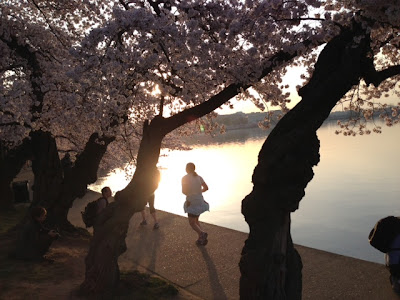Post Boston, Post 9/11
The Saturday before 9/11/01 I went to the National Book Festival. We milled around the Capitol grounds, soaking up the literary ambiance. Books and book lovers as far as the eye could see. Paradise!
Two days later the world was a different place. I thought to myself, there will be no innocent crowd scenes again. No more National Book Festivals — or anything like them. Gatherings will take place, but we won’t participate in them the same way. We’ll always be looking over our shoulders, bracing ourselves for a pop or a crack or a boom.
The reality has been far more complicated. I’ve gone back to the book festival and many other happenings on the Mall. Just last weekend I was standing with throngs of others at the base of the Washington Monument as Claire completed the Cherry Blossom 10-Miler. I plan to be waiting for her at the finish line of the Marine Corps Marathon in October. It’s been 11 and a half years since 9/11. Sometimes I forget.
But the Boston Marathon bombing has made us remember all over again, remember that we live in a different place than we did on September 10, 2011; remember the silent, cloudless sky, the Twin Towers incinerated, the Pentagon on fire.
Remember that innocence, or what we had left of it, is gone forever.


